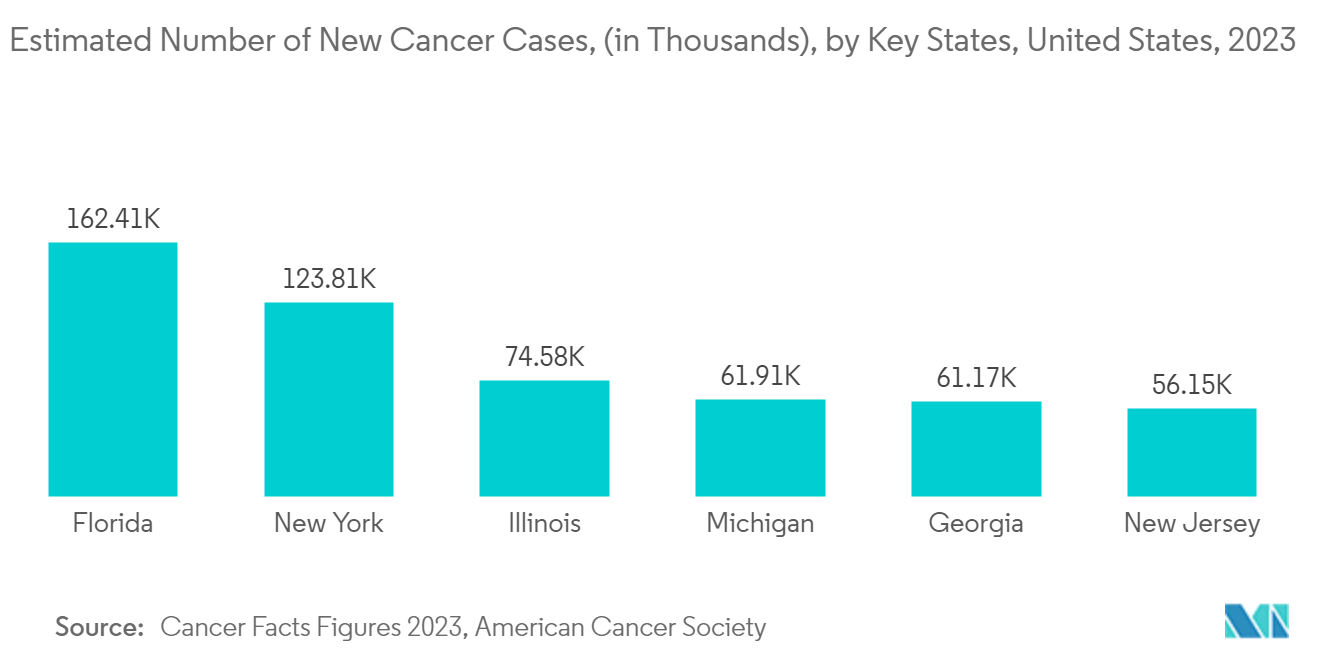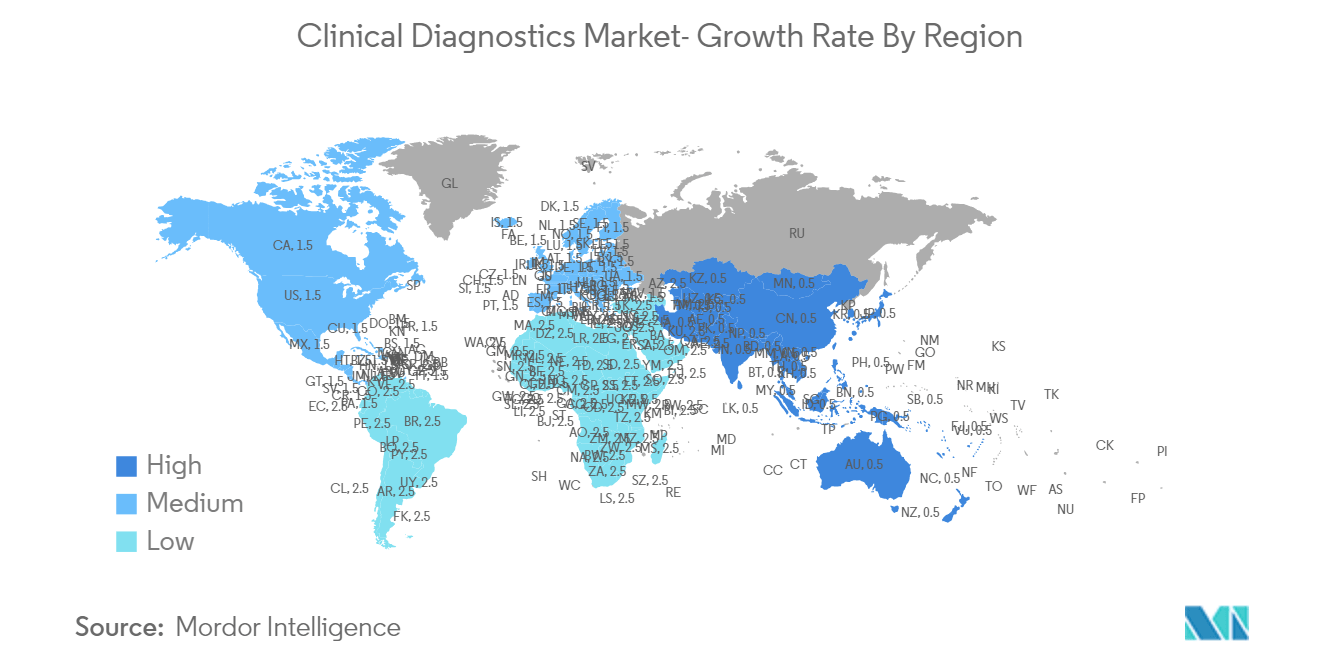Market Trends of Clinical Diagnostics Industry
The Reagents Segment is Expected to Register Considerable Growth During the Forecast Period
- Reagents are an integral part of clinical diagnostics. They are used for a wide range of different types of disease diagnosis. With the growing complexity of diseases and demand for early diagnosis, laboratories are increasingly using complex reagent combinations to diagnose diseases from biological samples. Laboratories face growing competition, necessitating ongoing quality enhancement and swift delivery of results. This requirement underscores the importance of reagents that can efficiently perform multiple tasks.
- Reagents are critical components in diagnostic tests and laboratory procedures, and several factors drive their market demand and development. Biotechnology and molecular biology innovations are leading to the development of more sophisticated and efficient reagents. These advancements enable more accurate, sensitive, and faster diagnostic tests. The increasing prevalence of chronic diseases, infectious diseases, and genetic disorders boosts the demand for diagnostic tests, thereby driving the need for high-quality reagents.
- For instance, according to a report published by the Molecular Medicine Reports in May 2023, the advancements in molecular diagnostic technologies such as PCR, isothermal amplification, gene chips, and high-throughput significantly enhance the capabilities and demand for specialized reagents in clinical diagnostics. These technologies rely on high-quality reagents to achieve precise, sensitive, and rapid detection of infectious disease pathogens and genetic variations, thereby propelling growth in the reagents segment of the clinical diagnostics market. The growing field of molecular diagnostics, which includes PCR, next-generation sequencing, and CRISPR-based technologies, relies heavily on specialized reagents, driving market growth. The rise in point-of-care testing, which allows for rapid diagnosis at the site of patient care, requires robust and reliable reagents to deliver accurate results quickly.
- Furthermore, growth strategies adopted by key players to cater to the rising demand for reagents are boosting the segment's growth. For instance, in January 2024, Fujirebio Holdings, Inc. and Agappe Diagnostia agreed to a Contract Development and Manufacturing Organization (CDMO) partnership for a cartridge-based CLIA system reagents manufacturing project for the immunology equipment Mispa i60 and Mispa i121.
- The factors mentioned above, such as increasing cases of chronic diseases and the growth strategies of the key players, are propelling the growth of the reagents segment.

North America is Expected to Dominate the Clinical Diagnostics Market During the Forecast Period
- The market for clinical diagnostics in North America is driven by the increasing geriatric population, rising patient awareness about clinical tests, and the rising prevalence of infectious and chronic disease patients.
- The increasing number of infectious diseases such as flu, HIV, and other diseases is the key factor driving the demand for molecular diagnostic tests and kits. For instance, as per the data published by the government of Canada in the Weekly Influenza Report, from May 12 to May 25, 2024, about 313 influenza B and 107 influenza A cases were recorded in week 21. Similarly, according to the annual report published by the government of Canada in October 2023, influenza tests rose from 0.75 million during 2021-2022 to 1.19 million during 2022-2023. Concurrently, influenza detections surged from 16,126 during 2021-2022 to 74,344 during 2022-2023. The rising incidence of influenza drives the need for molecular diagnostic methods to detect and identify influenza viruses through conserved gene targets. This surge in demand is fueling the market's growth in the region. With a significant portion of the population affected by influenza, the market is poised for a surge in demand for diagnostic tests, including rapid antigen testing, reverse transcription polymerase chain reaction (RT-PCR), and rapid molecular assays.
- Furthermore, due to the rising incidence of bacterial and viral infections and cancer in the area, there is an increasing need for point-of-care diagnostics. This demand is further driven by heightened research and development efforts in next-generation sequencing and the continuous evolution of technologies for treating chronic diseases. For instance, according to the report published by the American Cancer Society in January 2023, about 1.9 new cancer cases were diagnosed in the United States in 2023. Thus, the high number of cancer cases is anticipated to increase the adoption of clinical diagnostics for cancer diagnosis, propelling the market’s growth.
- Hence, the increasing geriatric population, rising patient awareness about laboratory tests, and the rising prevalence of infectious and chronic disease patients are expected to fuel the clinical diagnostics market’s growth in the region.


